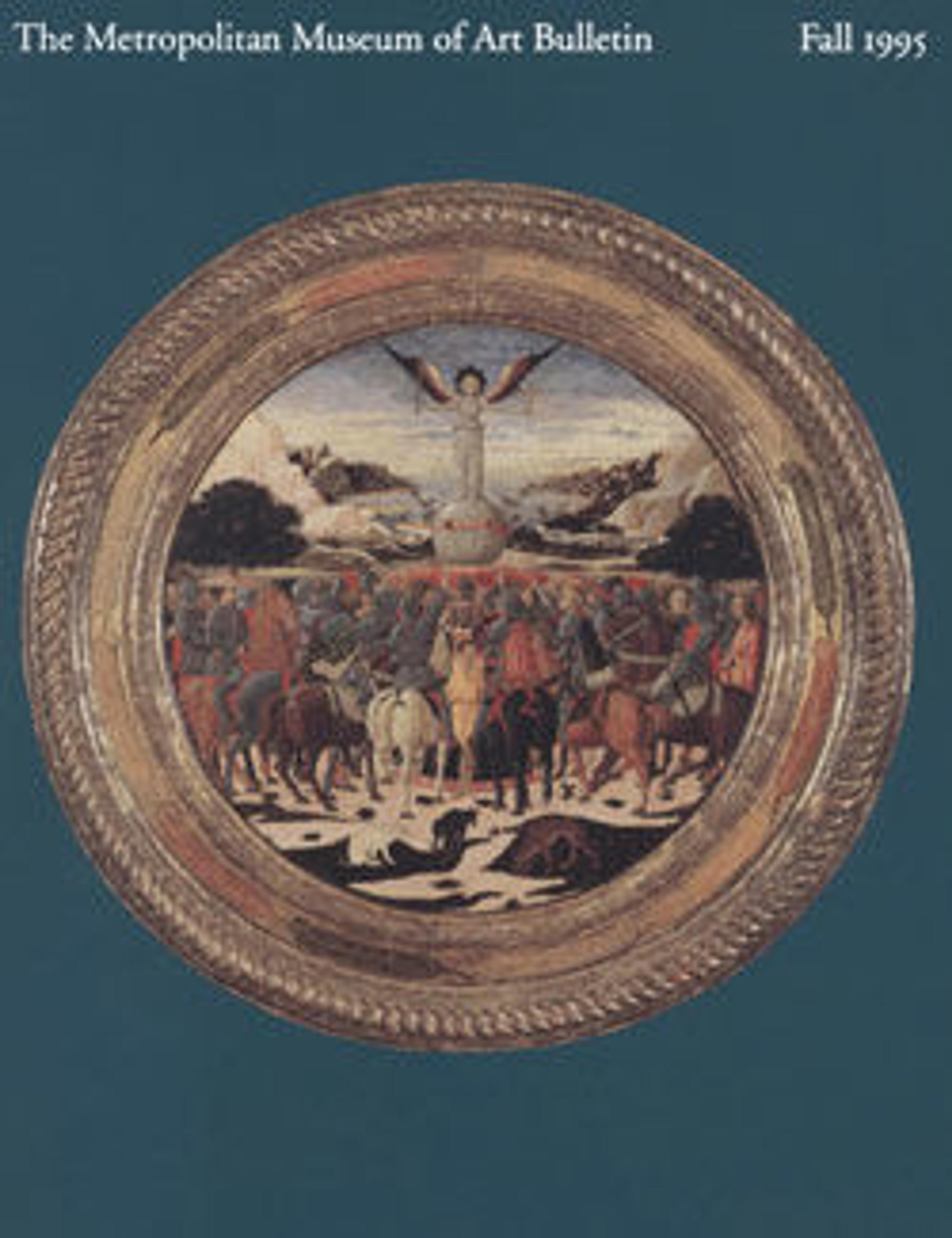The Coffee Grinder
Dubuffet waited until he was forty to devote himself to art. A man of exceptional intelligence, he painted raw, although childlike images that combine a bold handling of texture with a wry, dark sense of humor. The subjects of his early paintings are city streets, ordinary people performing everyday tasks, and likenesses of his friends. He also examined with naïve wonderment ordinary appliances such as a telephone, a typewriter, and even a dentist's tool.
In 1945 Dubuffet had begun creating what he referred to as hautes pâtes, paintings in which a thick paste served as the ground, color was used sparingly, and contours were scratched like graffiti. The paste used for the ground was made of tar, asphalt, and white lead, often enriched with cement, plaster, or varnishes, to which sand, coal dust, pebbles, and pieces of glass or straw might also be added. Gradually, color virtually disappeared from his work altogether.
Consistent with his "anti-art" position, Dubuffet rejected traditional portraiture, which he regarded as facile imitation. The Coffee Grinder is in fact based on the artist's wife, whom he frequently watched as she sat and cranked the handle of a coffee grinder gripped between her knees. The subject, frontally viewed, became a theme for a lithograph and for several drawings and paintings. The final version, however, bears slight resemblance to Lily, who was dark-haired, angular, and thin. Dubuffet flattened the head and broadened the body so that the hieratic figure completely fills the picture's frame. Dubuffet silhouetted this pale form against a somber background, actually a relief built with droppings, lumps, and furrows, combined into a substance that he described as "earth fermented by water."
In 1945 Dubuffet had begun creating what he referred to as hautes pâtes, paintings in which a thick paste served as the ground, color was used sparingly, and contours were scratched like graffiti. The paste used for the ground was made of tar, asphalt, and white lead, often enriched with cement, plaster, or varnishes, to which sand, coal dust, pebbles, and pieces of glass or straw might also be added. Gradually, color virtually disappeared from his work altogether.
Consistent with his "anti-art" position, Dubuffet rejected traditional portraiture, which he regarded as facile imitation. The Coffee Grinder is in fact based on the artist's wife, whom he frequently watched as she sat and cranked the handle of a coffee grinder gripped between her knees. The subject, frontally viewed, became a theme for a lithograph and for several drawings and paintings. The final version, however, bears slight resemblance to Lily, who was dark-haired, angular, and thin. Dubuffet flattened the head and broadened the body so that the hieratic figure completely fills the picture's frame. Dubuffet silhouetted this pale form against a somber background, actually a relief built with droppings, lumps, and furrows, combined into a substance that he described as "earth fermented by water."
Artwork Details
- Title: The Coffee Grinder
- Artist: Jean Dubuffet (French, Le Havre 1901–1985 Paris)
- Date: 1944
- Medium: Lithograph
- Edition: trial proof from an edition of 70 + 3 artist's proofs
- Dimensions: 13 1/4 × 9 1/2 in. (33.7 × 24.1 cm)
- Classification: Prints
- Credit Line: Purchase, Mrs. Fernand Leval Gift, 1995
- Object Number: 1995.183
- Rights and Reproduction: © 2026 Artists Rights Society (ARS), New York
- Curatorial Department: Modern and Contemporary Art
More Artwork
Research Resources
The Met provides unparalleled resources for research and welcomes an international community of students and scholars. The Met's Open Access API is where creators and researchers can connect to the The Met collection. Open Access data and public domain images are available for unrestricted commercial and noncommercial use without permission or fee.
To request images under copyright and other restrictions, please use this Image Request form.
Feedback
We continue to research and examine historical and cultural context for objects in The Met collection. If you have comments or questions about this object record, please contact us using the form below. The Museum looks forward to receiving your comments.
